Users Manual
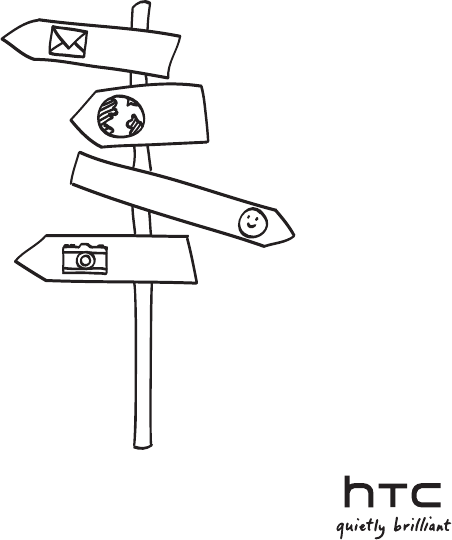
Your HTC 7 Trophy
User guide
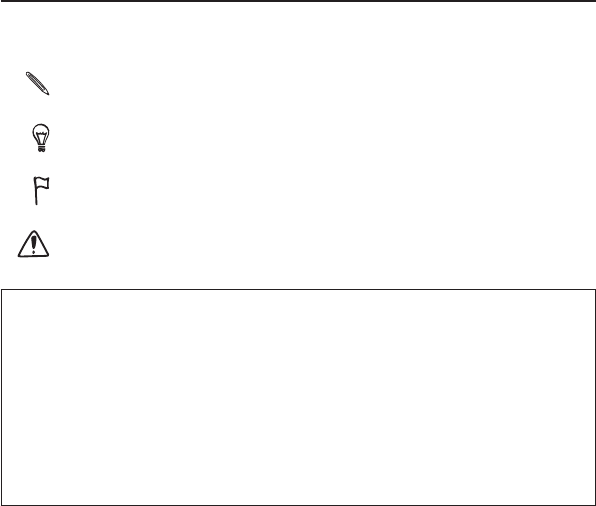
2
Conventions used in this guide
In this user guide, we use the following symbols to indicate useful and
important information:
This is a note. It might give extra information that’s only applicable in
certain situations. Or explain a specific feature in a bit more detail.
This is important info. Stuff you really need to know to accomplish a task or
get a feature to work properly.
This is a tip. It might provide an alternative way to do something or tell you
about a special option you might find useful.
This is a safety precaution. Read these carefully to avoid any potential
problems when using your phone.
Want more info?
For other helpful resources, go to www.htc.com/support. Please also
read the Safety and regulatory guide that’s included in the box.
For additional information about your phone, go to windowsphone.com.
Note: Certain Microsoft services/features may not be available in your
country or region.

Basics
Inside the box
You’ll find the following inside the box:
Phone
Battery
USB cable
3.5mm stereo headset
Power adapter
Micro SD card (installed)
Quick Start Guide
Product Safety & Warranty Statement
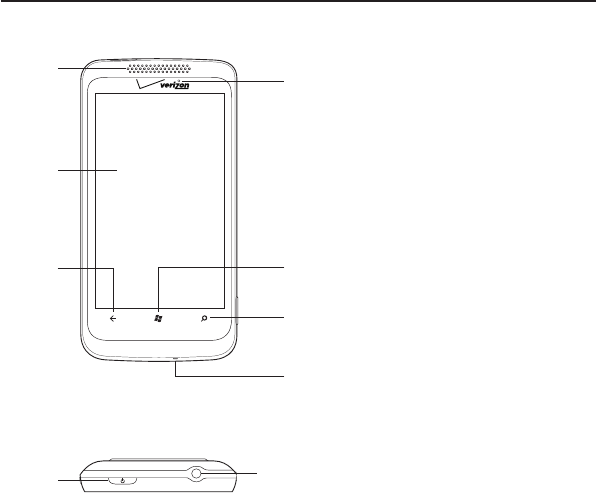
12 Basics
Your phone
Front panel
1
2
3
4
5
6
7
1 Earpiece
2 Touch screen
3 BACK
4 Microphone
5 SEARCH
6 START
7 Notification LED
Top panel
121 POWER
2 3.5mm audio jack
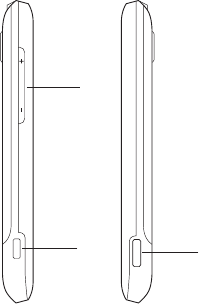
Basics 13
Left and right panels
1
23
1 VOLUME UP/DOWN
2 USB connector
3 CAMERA
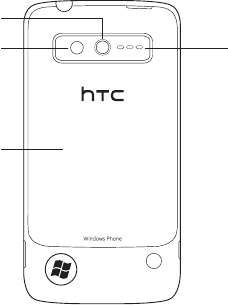
14 Basics
Back panel
1
2
3
41 5 megapixel camera
2 LED flashlight
3 Back cover
4 Speaker
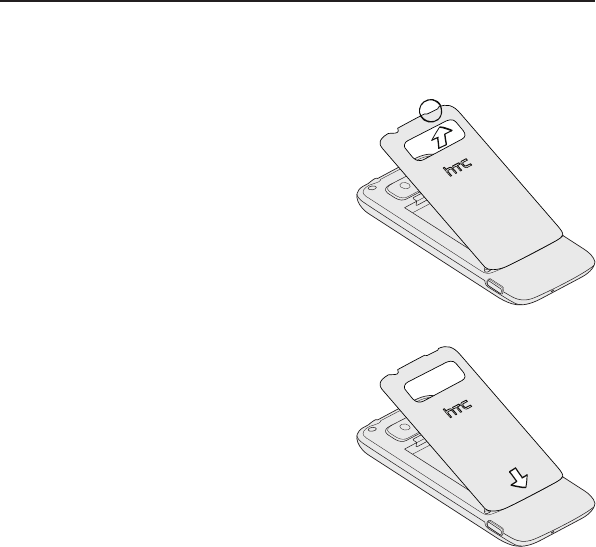
Basics 15
Back cover
Removing the back cover
Remove the back cover to access the battery compartment and SIM
card slot.
With the phone turned off, hold
your phone securely with the
front facing down.
With your thumb or finger, lift up
the back cover from the small
notch at the top of the phone.
1.
2.
Replacing the back cover
Secure the bottom part of the
back cover first by aligning the
tabs on the back cover into the
openings located inside the
battery compartment.
Press the sides and the top part
of the back cover down to lock
the cover into place. You will
hear a click when the back cover
is locked in place.
1.
2.
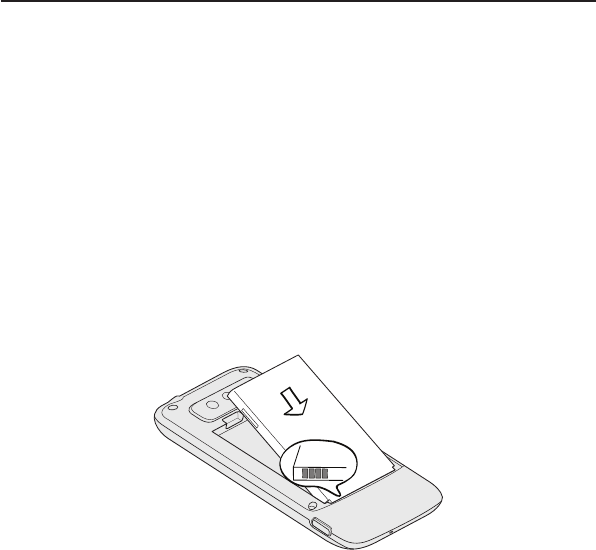
16 Basics
Battery
Your phone uses a rechargeable battery. Please use only original
batteries and accessories that came with your phone or replacements
that we recommend.
How long the battery can last before it needs recharging depends on
how you use your phone. Among these are the phone features and
accessories you use (for example, leaving your Bluetooth connection
always on uses more power). Long phone calls and frequent web
browsing use up much battery power. Also, consider your location:
poor signal strength from your mobile network and extreme
temperature make the battery work harder.
Inserting the battery
Remove the back cover. See “Removing the back cover”.
Insert the battery with its exposed copper contacts into the
phone first. The exposed copper contacts should be on the left
when you insert the battery.
Gently push the battery into place.
1.
2.
3.
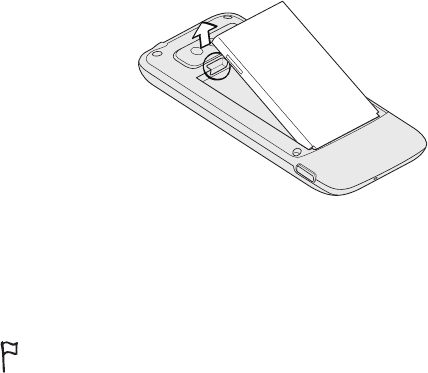
Basics 17
Removing the battery
Take the back cover off. See “Removing the back cover”.
Lift the battery from the groove at the upper left side of the
battery compartment to remove the battery.
Charging the battery
The battery is partially charged when shipped. Before you turn on
and start using your phone, it is recommended that you charge
the battery. Some batteries perform best after several full charge/
discharge cycles.
To charge the battery, please use only the power adapter and USB cable
that come with your phone.
Don’t remove the battery from the phone while you’re charging it with
the power or car adapter.
1.
2.
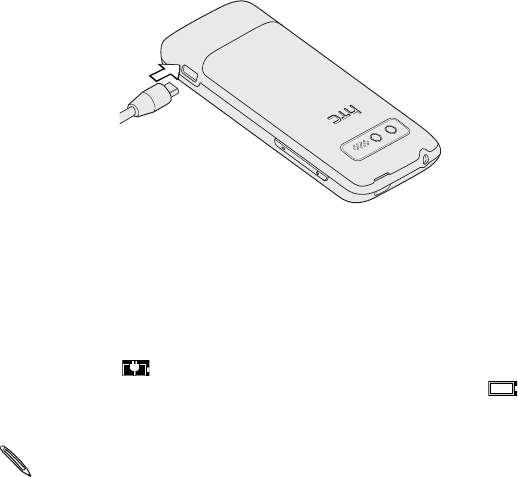
18 Basics
Connect the bigger end of the USB cable to the power adapter.
Connect the smaller end of the USB cable to the phone.
Plug in the power adapter to an electrical outlet to start charging
the battery.
Your phone may turn on when the battery is being charged.
As the battery is being charged, the notification LED shows a solid red
light when the battery is being charged. The light turns to solid green
when the phone is fully charged.
When you charge the battery while the phone is on, the charging
battery icon is displayed in the status bar of the Start screen.
After the battery has been fully charged, a full battery icon will be
displayed in the status bar of the Start screen.
As a safety precaution, the battery stops charging when it overheats.
1.
2.
3.

Basics 19
Switching your phone on or off
Switching your phone on
Press the POWER button. Easy.
When you turn on the phone for the first time, you’ll need to set it up. Go to
“Setting up your phone for the first time” and we’ll take you through it.
Switching your phone off
If the display is off, press the POWER button to turn it back on.
Unlock your phone if the Lock screen is displayed. See
“Unlocking the screen” in the Getting started chapter.
Press and hold the POWER button until you see the word
“Goodbye” onscreen.
1.
2.
3.
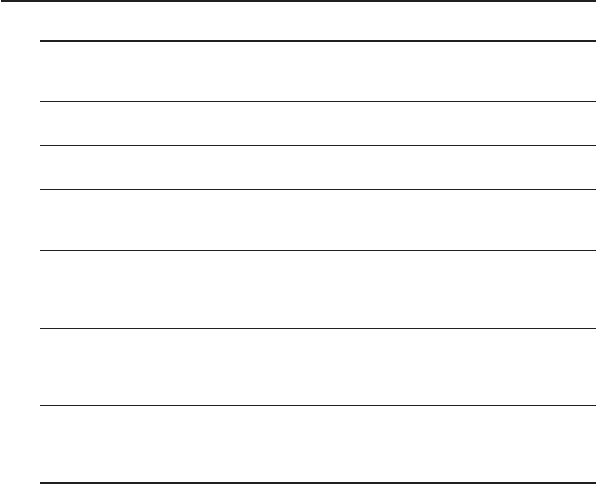
20 Basics
Finger gestures
Tap When you want to type using the keyboard, select items
onscreen such as apps and settings, or press onscreen
buttons, simply tap them with your finger.
Press and
hold
To open the available options for an item (e.g. contact or link
in a web page), simply press and hold the item.
Swipe or slide To swipe or slide means to quickly drag your finger vertically
or horizontally across the screen.
Drag Press and hold your finger with some pressure before you
start to drag. While dragging, do not release your finger until
you have reached the target position.
Flick Flicking the screen is similar to swiping, except that you
need to swipe your finger in light, quicker strokes. This finger
gesture is always in a vertical direction, such as when flicking
the contacts or message list.
Rotate For most screens, you can automatically change the screen
orientation from portrait to landscape by turning the phone
sideways. When entering text, you can turn the phone
sideways to bring up a bigger keyboard.
Pinch In some applications, like Pictures or the web browser, you
can “pinch” the screen using 2 fingers (for example, thumb
and index fingers) to zoom in or zoom out when viewing a
picture or a web page.

Safety and
regulatory guide

2 Safety and regulatory guide
Please read before proceeding
THE BATTERY IS NOT FULLY CHARGED WHEN YOU TAKE IT OUT OF THE BOX.
DO NOT REMOVE THE BATTERY PACK WHEN THE PHONE IS CHARGING.
YOUR WARRANTY IS INVALIDATED IF YOU DISASSEMBLE OR ATTEMPT TO DISASSEMBLE THE DEVICE.
Privacy restrictions
Some countries require full disclosure of recorded telephone conversations, and stipulate that you must inform the
person with whom you are speaking that the conversation is being recorded. Always obey the relevant laws and
regulations of your country when using the recording feature of your phone.
Disclaimers
ANY WEATHER, STOCK, OR OTHER INFORMATION, DATA, OR DOCUMENTATION (“ACCESSED INFORMATION”)
ARE PROVIDED “AS IS” AND WITHOUT ANY WARRANTY OR ANY TECHNICAL SUPPORT. TO THE MAXIMUM
EXTENT PERMITTED BY APPLICABLE LAW, HTC AND ITS AFFILIATES expressly disclaim any and all
representations and warranties, arising by law or otherwise, related to the Accessed Information, including without
limitation any express or implied representation or warranty of merchantability, fitness for a particular purpose,
non-infringement, quality, accuracy, completeness, effectiveness, reliability, or usefulness. Without limiting the
foregoing, it is further understood that HTC and its Affiliates are not responsible for any use or of the Accessed
Information or the results arising from such use, and that you use such information at your own risk.
Limitation of damages
TO THE MAXIMUM EXTENT PERMITTED BY APPLICABLE LAW, IN NO EVENT SHALL HTC OR ITS AFFILIATES BE
LIABLE TO YOU, ANY USER, OR THIRD PARTY FOR ANY INDIRECT, SPECIAL, CONSEQUENTIAL, INCIDENTAL
OR PUNITIVE DAMAGES OF ANY KIND, ARISING IN CONTRACT, TORT, OR OTHERWISE, INCLUDING, BUT NOT
LIMITED TO, INJURY, LOSS OF REVENUE, LOSS OF GOODWILL, LOSS OF BUSINESS OPPORTUNITY, LOSS OF
DATA, AND/OR LOSS OF PROFITS, REGARDLESS OF THE FORESEEABILITY THEREOF OR WHETHER HTC OR
ITS AFFILIATES HAVE BEEN ADVISED OF THE POSSIBILITY OF SUCH DAMAGES. AND IN NO EVENT SHALL
THE TOTAL LIABILITY OF HTC OR ITS AFFILIATES EXCEED THE AMOUNT RECEIVED FROM YOU, REGARDLESS
OF THE LEGAL THEORY UNDER WHICH THE CAUSE OF ACTION IS BROUGHT. THE FOREGOING DOES NOT
AFFECT ANY STATUTORY RIGHTS WHICH MAY NOT BE DISCLAIMED.
Important health information and safety precautions
When using this product, the safety precautions below must be taken to avoid possible legal liabilities and
damages.
Retain and follow all product safety and operating instructions. Observe all warnings in the operating instructions
on the product.
To reduce the risk of bodily injury, electric shock, fire, and damage to the equipment, observe the following
precautions.

Safety and regulatory guide 3
Electrical safety
This product is intended for use when supplied with power from the designated battery or power supply unit.
Other usage may be dangerous and will invalidate any approval given to this product.
Safety precautions for proper grounding installation
CAUTION: Connecting to an improperly grounded equipment can result in an electric shock to your device.
This product is equipped with a USB Cable for connecting with desktop or notebook computer. Be sure your
computer is properly grounded (earthed) before connecting this product to the computer. The power supply cord
of a desktop or notebook computer has an equipment-grounding conductor and a grounding plug. The plug must
be plugged into an appropriate outlet which is properly installed and grounded in accordance with all local codes
and ordinances.
Safety precautions for power supply unit
Use the correct external power source
A product should be operated only from the type of power source indicated on the electrical ratings label. If
you are not sure of the type of power source required, consult your authorized service provider or local power
company. For a product that operates from battery power or other sources, refer to the operating instructions
that are included with the product.
This product should be operated only with the following designated power supply unit(s).
AC adapter:
HTC, Model TC P300
Handle battery packs carefully
This product contains a Lithium-ion polymer or Lithium-ion battery. There is a risk of fire and burns if the
battery pack is handled improperly. Do not attempt to open or service the battery pack. Do not disassemble,
crush, puncture, short external contacts or circuits, dispose of in fire or water, or expose a battery pack to
temperatures higher than 60˚C (140˚F).
WARNING: Danger of explosion if battery is incorrectly replaced. To reduce risk of fire or burns, do not
disassemble, crush, puncture, short external contacts, expose to temperature above 60° C (140° F), or
dispose of in fire or water. Replace only with specified batteries. Recycle or dispose of used batteries
according to the local regulations or reference guide supplied with your product.
NOTE: This product should be operated only with the following designated Battery Pack(s).
HTC, Model BB96100 or BTR6300B
Take extra precautions
Keep the battery or device dry and away from water or any liquid as it may cause a short circuit.
Keep metal objects away so they don’t come in contact with the battery or its connectors as it may lead to
short circuit during operation.
•
•
•
•
4 Safety and regulatory guide
The phone should only be connected to products that bear the USB-IF logo or have completed the USB-IF
compliance program.
Do not use a battery that appears damaged, deformed, or discolored, or the one that has any rust on its
casing, overheats, or emits a foul odor.
Always keep the battery out of the reach of babies and small children, to avoid swallowing of the battery.
Consult the doctor immediately if the battery is swallowed.
Only use the battery with a charging system that has been qualified with the system per this standard, IEEE-
Std-1725-2006. Use of an unqualified battery or charger may present a risk of fire, explosion, leakage or other
hazard.
Replace the battery only with another battery that has been qualified with the system per this standard, IEEE-
Std-1725-2006. Use of an unqualified battery may present a risk of fire, explosion, leakage or other hazard.
Avoid dropping the phone or battery. If the phone or battery is dropped, especially on a hard surface, and the
user suspects damage, take it to a service centre for inspection.
If the battery leaks:
Do not allow the leaking fluid to come in contact with skin or clothing. If already in contact, flush the
aected area immediately with clean water and seek medical advice.
Do not allow the leaking fluid to come in contact with eyes. If already in contact, DO NOT rub; rinse
with clean water immediately and seek medical advice.
Take extra precautions to keep a leaking battery away from fire as there is a danger of ignition or
explosion.
Safety precautions for direct sunlight
Keep this product away from excessive moisture and extreme temperatures. Do not leave the product or its
battery inside a vehicle or in places where the temperature may exceed 60°C (140°F), such as on a car dashboard,
window sill, or behind a glass that is exposed to direct sunlight or strong ultraviolet light for extended periods of
time. This may damage the product, overheat the battery, or pose a risk to the vehicle.
Prevention of hearing loss
CAUTION: Permanent hearing loss may occur if earphones or headphones are used at high volume for
prolonged periods of time.
Safety in aircraft
Due to the possible interference caused by this product to an aircraft’s navigation system and its communications
network, using this device’s phone function on board an airplane is against the law in most countries. If you want
to use this device when on board an aircraft, remember to turn off your phone by switching to Airplane Mode.
Environment restrictions
Do not use this product in gas stations, fuel depots, chemical plants or where blasting operations are in progress,
or in potentially explosive atmospheres such as fuelling areas, fuel storehouses, below deck on boats, chemical
plants, fuel or chemical transfer or storage facilities, and areas where the air contains chemicals or particles,
such as grain, dust, or metal powders. Please be aware that sparks in such areas could cause an explosion or fire
resulting in bodily injury or even death.
•
•
•
•
•
•
•
•
•
•
Safety and regulatory guide 5
Explosive atmospheres
When in any area with a potentially explosive atmosphere or where flammable materials exist, the product should
be turned off and the user should obey all signs and instructions. Sparks in such areas could cause an explosion
or fire resulting in bodily injury or even death. Users are advised not to use the equipment at refueling points such
as service or gas stations, and are reminded of the need to observe restrictions on the use of radio equipment
in fuel depots, chemical plants, or where blasting operations are in progress. Areas with a potentially explosive
atmosphere are often, but not always, clearly marked. These include fueling areas, below deck on boats, fuel or
chemical transfer or storage facilities, and areas where the air contains chemicals or particles, such as grain, dust,
or metal powders.
Road safety
Full attention must be given to driving at all times in order to reduce the risk of an accident. Using a phone while
driving (even with a hands free kit) causes distraction and can lead to an accident. You must comply with local
laws and regulations restricting the use of wireless devices while driving.
Safety precautions for RF exposure
Avoid using your phone near metal structures (for example, the steel frame of a building).
Avoid using your phone near strong electromagnetic sources, such as microwave ovens, sound speakers,
TV and radio.
Use only original manufacturer-approved accessories, or accessories that do not contain any metal.
Use of non-original manufacturer-approved accessories may violate your local RF exposure guidelines and
should be avoided.
Interference with medical equipment functions
This product may cause medical equipment to malfunction. The use of this device is forbidden in most hospitals
and medical clinics.
If you use any other personal medical device, consult the manufacturer of your device to determine if they
are adequately shielded from external RF energy. Your physician may be able to assist you in obtaining this
information.
Turn your phone OFF in health care facilities when any regulations posted in these areas instruct you to do so.
Hospitals or health care facilities may be using equipment that could be sensitive to external RF energy.
Hearing aids
Some digital wireless phones may interfere with some hearing aids. In the event of such interference, you may
want to consult your service provider, or call the customer service line to discuss alternatives.
Nonionizing radiation
Your device has an internal antenna. This product should be operated in its normal-use position to ensure the
radiative performance and safety of the interference. As with other mobile radio transmitting equipment, users are
advised that for satisfactory operation of the equipment and for the safety of personnel, it is recommended that
no part of the human body be allowed to come too close to the antenna during operation of the equipment.
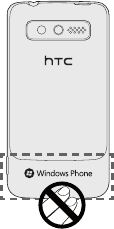
6 Safety and regulatory guide
Use only the supplied integral antenna. Use of unauthorized or modified antennas may impair call quality and
damage the phone, causing loss of performance and SAR levels exceeding the recommended limits as well as
result in non-compliance with local regulatory requirements in your country.
To assure optimal phone performance and ensure
human exposure to RF energy is within the guidelines
set forth in the relevant standards, always use your
device only in its normal-use position. Contact with the
antenna area may impair call quality and cause your
device to operate at a higher power level than needed.
Avoiding contact with the antenna area when the
phone is IN USE optimizes the antenna performance
and the battery life.
Antenna
location
Electrical safety
Accessories
Use only approved accessories.
Do not connect with incompatible products or accessories.
Take care not to touch or allow metal objects, such as coins or key rings, to contact or short-circuit the
battery terminals.
Connection to a car
Seek professional advice when connecting a phone interface to the vehicle electrical system.
Faulty and damaged products
Do not attempt to disassemble the phone or its accessory.
Only qualified personnel must service or repair the phone or its accessory.
General precautions
You alone are responsible for how you use your phone and any consequences of its use. You must always switch
off your phone wherever the use of a phone is prohibited. Use of your phone is subject to safety measures
designed to protect users and their environment.
Avoid applying excessive pressure to the device
Do not apply excessive pressure on the screen and the device to prevent damaging them and remove the device
from your pants’ pocket before sitting down. It is also recommended that you store the device in a protective
case and only use the device stylus or your finger when interacting with the touch screen. Cracked display
screens due to improper handling are not covered by the warranty.
•
•
•
•
•
Safety and regulatory guide 7
Device getting warm after prolonged use
When using your device for prolonged periods of time, such as when you’re talking on the phone, charging
the battery or browsing the Web, the device may become warm. In most cases, this condition is normal and
therefore should not be interpreted as a problem with the device.
Heed service markings
Except as explained elsewhere in the Operating or Service documentation, do not service any product yourself.
Service needed on components inside the device should be done by an authorized service technician or
provider.
Protect your phone
Always treat your phone and its accessories with care and keep them in a clean and dust-free place.
Do not expose your phone or its accessories to open flames or lit tobacco products.
Do not expose your phone or its accessories to liquid, moisture or high humidity.
Do not drop, throw or try to bend your phone or its accessories.
Do not use harsh chemicals, cleaning solvents, or aerosols to clean the device or its accessories.
Do not paint your phone or its accessories.
Do not attempt to disassemble your phone or its accessories, only authorised personnel must do so.
Do not expose your phone or its accessories to extreme temperatures, minimum -20 and maximum 50
degrees Celsius.
Please check local regulations for disposal of electronic products.
Do not carry your phone in your back pocket as it could break when you sit down.
Damage requiring service
Unplug the product from the electrical outlet and refer servicing to an authorized service technician or provider
under the following conditions:
Liquid has been spilled or an object has fallen into the product.
The product has been exposed to rain or water.
The product has been dropped or damaged.
There are noticeable signs of overheating.
The product does not operate normally when you follow the operating instructions.
Avoid hot areas
The product should be placed away from heat sources such as radiators, heat registers, stoves, or other
products (including amplifiers) that produce heat.
Avoid wet areas
Never use the product in a wet location.
Avoid using your device after a dramatic change in temperature
When you move your device between environments with very different temperature and/or humidity ranges,
condensation may form on or within the device. To avoid damaging the device, allow sufficient time for the
moisture to evaporate before using the device.
NOTICE: When taking the device from low-temperature conditions into a warmer environment or from high-
temperature conditions into a cooler environment, allow the device to acclimate to room temperature
before turning on power.
•
•
•
•
•
•
•
•
•
•
•
•
•
•
•
8 Safety and regulatory guide
Avoid pushing objects into product
Never push objects of any kind into cabinet slots or other openings in the product. Slots and openings are
provided for ventilation. These openings must not be blocked or covered.
Air bags
Do not place a phone in the area over an air bag or in the air bag deployment area. Store the phone safely
before driving your vehicle.
Mounting accessories
Do not use the product on an unstable table, cart, stand, tripod, or bracket. Any mounting of the product
should follow the manufacturer’s instructions, and should use a mounting accessory recommended by the
manufacturer.
Avoid unstable mounting
Do not place the product with an unstable base.
Use product with approved equipment
This product should be used only with personal computers and options identified as suitable for use with your
equipment.
Adjust the volume
Turn down the volume before using headphones or other audio devices.
Cleaning
Unplug the product from the wall outlet before cleaning. Do not use liquid cleaners or aerosol cleaners. Use a
damp cloth for cleaning, but NEVER use water to clean the LCD screen.
Small children
Do not leave your phone and its accessories within the reach of small children or allow them to play with it. They
could hurt themselves or others, or could accidentally damage the phone. Your phone contains small parts with
sharp edges that may cause an injury or which could become detached and create a choking hazard.
Repetitive motion injuries
To minimise the risk of RSI, when Texting or playing games with your phone:
Do not grip the phone too tightly
Press the buttons lightly
Make use of the special features in the handset which minimise the number of buttons which have to be
pressed, such as message templates and predictive text.
Take lots of breaks to stretch and relax.
Operating machinery
Full attention must be given to operating the machinery in order to reduce the risk of an accident.
Electrostatic discharge (ESD)
Do not touch the SIM card’s metal connectors.
Loud noise
This phone is capable of producing loud noises which may damage your hearing.
Emergency calls
This phone, like any wireless phone, operates using radio signals, which cannot guarantee connection in all
conditions. Therefore, you must never rely solely on any wireless phone for emergency communications.
•
•
•
•
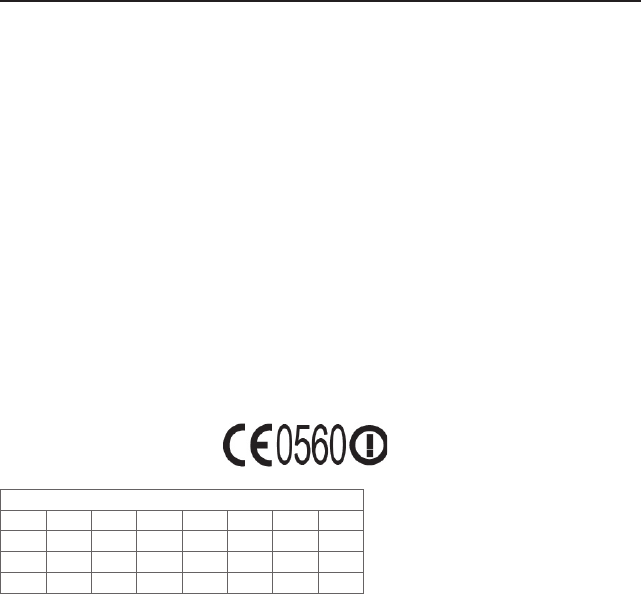
Safety and regulatory guide 9
Regulatory agency identifications
For regulatory identification purposes, your product is assigned a model number of PC40200.
To ensure continued reliable and safe operation of your device, use only the accessories listed below with your
PC40200.
The Battery Pack has been assigned a model number of
BB96100 or BTR6300B
.
Operating temperature range: 32°F to 104°F (0°C to 40°C)
NOTE: This product is intended for use with a certified Class 2 Limited Power Source, rated 5 Volts DC,
maximum 1 Amp power supply unit.
European Union notice
Products with CE marking comply with the R&TTE Directive (99/5/EC), the EMC Directive (2004/108/EC), and
the Low Voltage Directive (2006/95/EC) issued by the Commission of the European Community.
Compliance with these directives implies conformity to the following European Norms (in parentheses are the
equivalent international standards).
EN 60950-1 (IEC 60950-1)
EN 301 511
EN 301 489-1
EN 301 489-3
EN 301 489-7
EN 301 489-17
EN 301 489-24
EN 301 908-1 & 2
EN 300 328
EN 300 440-1
EN 300 440-2
EN 50360 / 50361
EN 50371
EN 62311
EN 62209-1
This equipment may be operated in:
AT BE BG CH CY CZ DE DK
EE ES FI FR GB GR HU IE
IT IS LI LT LU LV MT NL
NO PL PT RO SE SI SK TR
•
•
•
•
•
•
•
•
•
•
•
•
•
•
•
10 Safety and regulatory guide
Federal Communication Commission Interference Statement
This equipment has been tested and found to comply with the limits for a Class B digital device, pursuant to Part
15 of the FCC Rules. These limits are designed to provide reasonable protection against harmful interference in a
residential installation. This equipment generates, uses and can radiate radio frequency energy and, if not installed
and used in accordance with the instructions, may cause harmful interference to radio communications. However,
there is no guarantee that interference will not occur in a particular installation. If this equipment does cause
harmful interference to radio or television reception, which can be determined by turning the equipment off and
on, the user is encouraged to try to correct the interference by one of the following measures:
Reorient or relocate the receiving antenna.
Increase the separation between the equipment and receiver.
Connect the equipment into an outlet on a circuit dierent from that to which the receiver is connected.
Consult the dealer or an experienced radio or television technician for help.
FCC Caution: Any changes or modifications not expressly approved by the party responsible for compliance could
void the user’s authority to operate this equipment.
This device complies with Part 15 of the FCC Rules. Operation is subject to the following two conditions: (1) This
device may not cause harmful interference, and (2) this device must accept any interference received, including
interference that may cause undesired operation.
IMPORTANT NOTE
Radiation Exposure Statement:
This equipment complies with FCC radiation exposure limits set forth for an uncontrolled environment. End users
must follow the specific operating instructions for satisfying RF exposure compliance. To maintain compliance
with FCC RF exposure compliance requirements, please follow operation instruction as documented in this
manual.
This transmitter must not be co-located or operating in conjunction with any other antenna or transmitter, except
the transmitters built-in with the device.
FCC Hearing-Aid Compatibility (HAC) Regulations for Wireless Devices
On July 10, 2003, the U.S. Federal Communications Commission (FCC) Report and Order in WT Docket 01- 309
modified the exception of wireless phones under the Hearing Aid Compatibility Act of 1988 (HAC Act) to require
digital wireless phones be compatible with hearing-aids. The intent of the HAC Act is to ensure reasonable access
to telecommunications services for persons with hearing disabilities. While some wireless phones are used near
some hearing devices (hearing aids and cochlear implants), users may detect a buzzing, humming, or whining
noise. Some hearing devices are more immune than others to this interference noise, and phones also vary in
the amount of interference they generate. The wireless telephone industry has developed a rating system for
wireless phones, to assist hearing device users find phones that may be compatible with their hearing devices.
Not all phones have been rated. Phones that are rated have the rating on their box or a label located on the box.
The ratings are not guarantees. Results will vary depending on the user’s hearing device and hearing loss. If your
hearing device happens to be vulnerable to interference, you may not be able to use a rated phone successfully.
Trying out the phone with your hearing device is the best way to evaluate it for your personal needs.
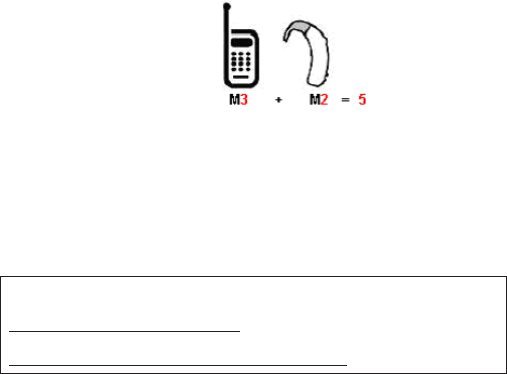
Safety and regulatory guide 11
M-Ratings: Phones rated M3 or M4 meet FCC requirements and are likely to generate less interference to hearing
devices than phones that are not rated. M4 is the better/higher of the two ratings. PC40200 is rated M4.
T-Ratings: Phones rated T3 or T4 meet FCC requirements and are likely to be more usable with a hearing aid’s
telecoil than phones that are not rated. T4 is the better/higher of the two ratings. PC40200 is rated T4.
The handset has not been rated for hearing aid compatibility with respect to the Wi-Fi capability.
Please power off the Bluetooth function while using hearing aid devices with your PC40200.
Hearing devices may also be rated.
Your hearing device manufacturer
or hearing health professional may
help you find this rating. Higher
ratings mean that the hearing device
is relatively immune to interference
noise.
The hearing aid and wireless phone rating values are then added together. A sum of 5 is considered acceptable for
normal use. A sum of 6 is considered for better use. A sum of 8 is considered for best use. In the above example,
if a hearing aid meets the M2 level rating and the wireless phone meets the M3 level rating, the sum of the two
values equal M5. This should provide the hearing aid user with “normal usage” while using their hearing aid with
the particular wireless phone. “Normal usage” in this context is defined as a signal quality that is acceptable for
normal operation.
This methodology applies equally for T ratings. The M mark is intended to be synonymous with the U mark. The T
mark is intended to be synonymous with the UT mark. The M and T marks are recommended by the Alliance for
Telecommunications Industries Solutions (ATIS). The U and UT marks are referenced in Section 20.19 of the FCC
Rules. The HAC rating and measurement procedure are described in the American National Standards Institute
(ANSI) C63.19 standard.
For information about hearing aids and digital wireless phones
FCC Hearing Aid Compatibility and Volume Control:
http://www.fcc.gov/cgb/dro/hearing.html
Gallaudet University, RERC:
https://fjallfoss.fcc.gov/oetcf/eas/reports/GenericSearch.cfm
PC40200 has not been shown to comply with any hearing aid compatibility requirements when using the GSM air
interface and is not configured to use the GSM air interface in the United States. Hearing aid or cochlear implant
users should note this fact and consult the service provider about return and exchange policies should such
operation prove to be unacceptable.
SAR Information
Head: 0.67 W/kg @10g (CE), 1.48 W/kg @1g (FCC)
Body: 0.846 W/kg @10g (CE), 1.02 W/kg @1g (FCC)

12 Safety and regulatory guide
THIS MODEL DEVICE MEETS THE GOVERNMENT’S REQUIREMENTS FOR EXPOSURE TO RADIO WAVES. For
body worn operation, this phone has been tested and meets the FCC RF exposure guidelines when used with the
HTC Corporation. Accessories supplied or designated for this product. Use of other accessories may not ensure
compliance with the FCC RF exposure guidelines.
Your wireless mobile phone is a radio transmitter and receiver. It is designed and manufactured not to exceed
the emission limits for exposure to radio frequency (RF) energy set by the Federal Communications Commission
of the U.S. Government. These limits are part of comprehensive guidelines and establish permitted levels of RF
energy for the general population. The guidelines are based on the safety standards previously set by both U.S.
and international standards bodies:
American National Standards Institute (ANSI) IEEE. C95.1-1992.
National Council on Radiation Protection and Measurement (NCRP). Report 86. 1986.
International Commission on Non-Ionizing Radiation Protection (ICNIRP) 1996.
Ministry of Health (Canada), Safety Code 6. The standards include a substantial safety margin designed to
assure the safety of all persons, regardless of age and health.
The exposure standard for wireless mobile phone employs a unit of measurement known as the Specific
Absorption Rate, or SAR. The SAR limit set by the FCC is 1.6 W/kg*.
The FCC has granted an Equipment Authorization for this model device with all reported SAR levels evaluated as
in compliance with the FCC RF exposure guidelines. SAR information on this model device is on file with the FCC
and can be found under the Display Grant section of https://fjallfoss.fcc.gov/oetcf/eas/reports/GenericSearch.
cfm after searching on FCC ID: NM8PC40220. Additional information on Specific Absorption Rates (SAR) can be
found on the Cellular Telecommunications & Internet Association (CTIA) Web-site as http://www.phonefacts.net.
* In the U.S. and Canada, the SAR limit for mobile phone used by the public is 1.6 Watts/kg (W/kg) averaged over
one gram of tissue. The standard incorporates a substantial margin of safety to give additional protection for the
public and to account for any variations in usage.
Normal condition only to ensure the radiative performance and safety of the interference. As with other mobile
radio transmitting equipment, users are advised that for satisfactory operation of the equipment and for the
safety of personnel, it is recommended that no part of the human body be allowed to come too close to the
antenna during operation of the equipment.
Body-worn Operation
This device was tested for typical body-worn operations. To comply with RF exposure requirements, a minimum
separation distance of 1.5 cm must be maintained between the user’s body and the handset, including the
antenna. Third-party belt-clips, holsters, and similar accessories used by this device should not contain any
metallic components. Body-worn accessories that do not meet these requirements may not comply with RF
exposure requirements and should be avoided.
Use only the supplied or an approved antenna. Unauthorized antennas, modifications, or attachments could
impair call quality, damage the phone, or result in violation of regulations. Do not use the phone with a damaged
antenna. If a damaged antenna comes into contact with the skin, a minor burn may result. Please contact your
local dealer for replacement antenna.

Safety and regulatory guide 13
FCC RF Radiation Exposure Statement
This Transmitter has been demonstrated co-location compliance requirements with Bluetooth and WLAN.
This transmitter must not be co-located or operating in conjunction with any other antenna or transmitter.
This equipment complies with FCC RF radiation exposure
limits set forth for an uncontrolled environment.
Telecommunications & Internet Association (TIA) safety information
Pacemakers
The Health Industry Manufacturers Association recommends that a minimum separation of 15 cm (6 inches)
be maintained between a handheld wireless phone and a pacemaker to avoid potential interference with the
pacemaker. These recommendations are consistent with the independent research by and recommendations of
Wireless Technology Research.
Persons with pacemakers:
Should ALWAYS keep the phone more than
15 cm (6 inches)
from their pacemaker when the phone is
turned ON.
Should not carry the phone in a breast pocket.
Should use the ear opposite the pacemaker to minimize the potential for interference. If you have any
reason to suspect that interference is taking place, turn the phone OFF immediately.
Hearing aids
Some digital wireless phones may interfere with some hearing aids. In the event of such interference, you may
want to consult your service provider, or call the customer service line to discuss alternatives.
Other Medical Devices
If you use any other personal medical device, consult the manufacturer of your device to determine if they
are adequately shielded from external RF energy. Your physician may be able to assist you in obtaining this
information.
Turn the phone OFF in health care facilities when any regulations posted in these areas instruct you to do so.
Hospitals or health care facilities may be using equipment that could be sensitive to external RF energy.
WEEE notice
The Directive on Waste Electrical and Electronic Equipment (WEEE), which entered into force as European law on
13th February 2003, resulted in a major change in the treatment of electrical equipment at end-of-life.
The purpose of this Directive is, as a first priority, the prevention of WEEE, and in addition, to promote the reuse,
recycling and other forms of recovery of such wastes so as to reduce disposal.
The WEEE logo (shown at the left) on the product or on its box indicates that this product must not be
disposed of or dumped with your other household waste. You are liable to dispose of all your electronic
or electrical waste equipment by relocating over to the specified collection point for recycling of
such hazardous waste. Isolated collection and proper recovery of your electronic and electrical waste
equipment at the time of disposal will allow us to help conserving natural resources. Moreover, proper
recycling of the electronic and electrical waste equipment will ensure safety of human health and
environment. For more information about electronic and electrical waste equipment disposal, recovery,
and collection points, please contact your local city center, household waste disposal service, shop from
where you purchased the equipment, or manufacturer of the equipment.
14 Safety and regulatory guide
RoHS compliance
This product is in compliance with Directive 2002/95/EC of the European Parliament and of the Council of 27
January 2003, on the restriction of the use of certain hazardous substances in electrical and electronic equipment
(RoHS) and its amendments.
Safety and regulatory guide 15

91H0xxxx-xxM Rev.A
htc.com